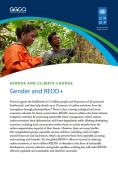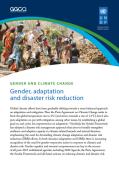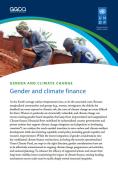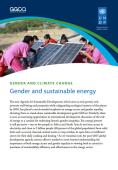
Forests support the livelihoods of 1.6 billion people and 80 percent of all terrestrial biodiversity, and they help absorb up to 30 percent of carbon emissions from the atmosphere through photosynthesis. There is thus a strong ecological and socioeconomic rationale for forest conservation. REDD+ aims to address the forest-climate mitigation interface by promoting sustainable forest management, which reduces carbon emissions from deforestation and forest degradation while allowing developing countries, including local communities within them, to receive benefits from the carbon sequestration capacity of their forests. However, there are many hurdles that marginalized groups, especially women, still face, including a lack of rights around forest use and land tenure, which can prevent them from equitably accessing and receiving such benefits. For the global REDD+ effort to succeed in reducing carbon emissions, it has to deliver REDD+ co-benefits in the form of sustainable development, poverty reduction and gender equality—nothing less will make REDD+ effective, equitable and sustainable, and therefore successful.

Global climate efforts have been gradually shifting towards a more balanced approach on adaptation and mitigation. Thus the Paris Agreement on Climate Change seeks to limit the global temperature rise to 2˚C (and strives towards a rise of 1.5˚C), but it also puts adaptation on par with mitigation, among other issues, by establishing a global goal on, and cycles for, improvement on adaptation. Similarly, the Sendai Framework has adopted a disaster risk management approach that aims to broadly strengthen resilience and adaptive capacity to climate-related hazards and natural disasters, emphasizing the need for dovetailing climate change adaptation and disaster risk reduction (DRR) efforts. In both domains (adaptation and DRR), there is increasing recognition of the need for gender-responsive action in response to climatic and disaster risk. Gender equality and women’s empowerment are key to the success of all post-2015 multilateral agendas, including 2030 Agenda, the Paris Agreement, the Sendai Framework, and all future actions on reducing climatic and disaster risk.

As the Earth’s average surface temperatures rise, so do the associated costs. Because marginalised communities and groups (e.g., women, immigrants, the elderly, the disabled) are more exposed to climatic risk, the costs of climate change are more difficult for them. Women, in particular, are structurally vulnerable, and climate change can worsen existing gender-based inequities that keep them impoverished and marginalised. Climate finance (‘financial flows mobilised by industrialised country governments and private entities that support climate change mitigation and adaptation in developing countries’) can catalyse the much-needed transition to zero-carbon and climate-resilient development while also fostering equitable social policy, including gender equality and women’s empowerment. While the recent integration of gender considerations into key multilateral climate finance mechanisms, including the recently operationalized Green Climate Fund, are steps in the right direction, gender considerations have yet to be effectively mainstreamed in ongoing climate change programmes and activities, and national planning.

The new Agenda for Sustainable Development, which aims to end poverty and promote well-being and prosperity while safeguarding ecological systems of the planet by 2030, has placed a much-needed emphasis on energy access and gender equality, elevating them as stand-alone sustainable development goals (SDGs). Similarly, there is now an increasing appreciation in international development discourses of the role of energy as a conduit for redressing historic gender inequities. Yet, energy poverty is still pervasive – one in five people in Africa and South Asia do not have access to electricity, and close to 3 billion people (40 percent of the global population) burn solid fuels such as wood, charcoal, animal waste or crop residues in open fires or inefficient stoves for their daily cooking and heating. As we transition into the 2030 development agenda, serious effort is needed to move beyond understanding the importance of both energy access and gender equality to viewing both as central to questions of sustainability, efficiency and effectiveness in the energy sector.
Climate change is increasingly recognised as a global crisis, but solutions have so far focused on scientific and economic options, rather than on the human and gender dimensions. Despite the fact that marginalised and poor people, including women, are affected first and hardest by climate change, evidence indicates that women’s views, needs and participation are excluded from the design and planning of climate change responses, including major policies. Moreover, women are often perceived primarily as victims, and not as equal contributors of knowledge and skills in disaster risk, adaptation and mitigation strategies.
